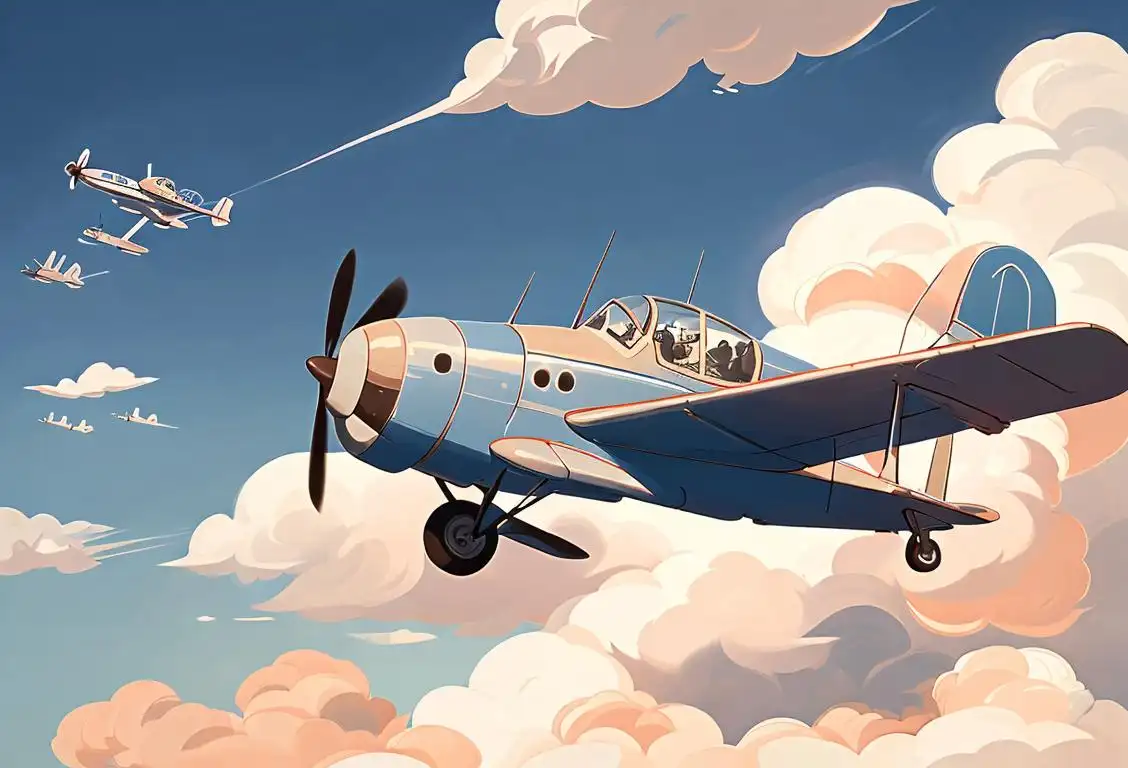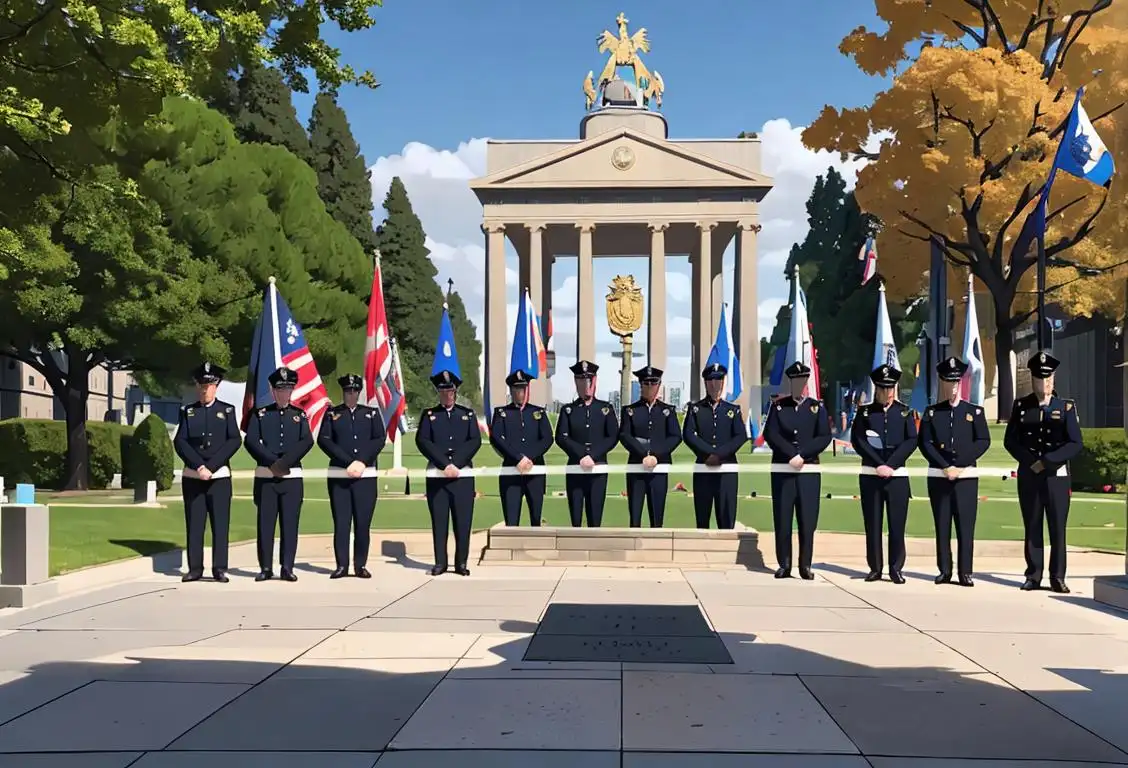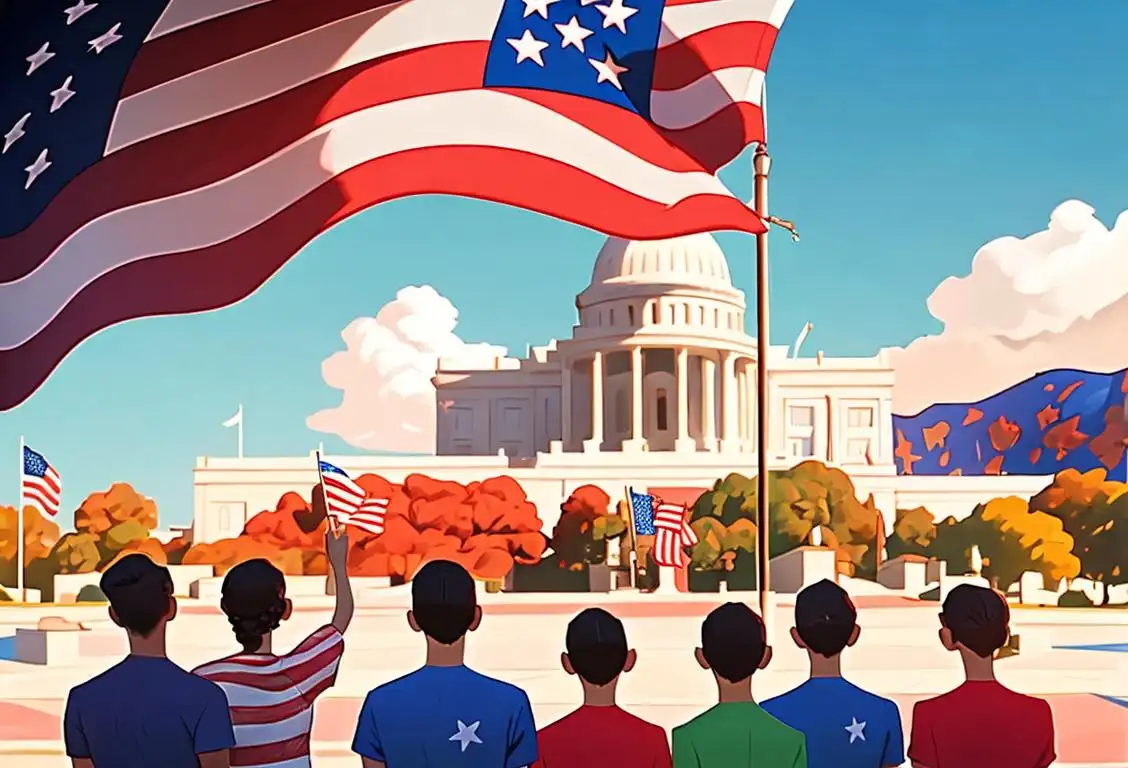National Aviation Day

Fasten your seatbelts and set your tray tables to an upright position folks, because we are about to embark on a delightful journey through time on the exclusive flight 'National Aviation Day'. The day officially designated by our resident co-pilot President Franklin D. Roosevelt in 1939, just to celebrate the history and development of aviation. Now, how in-flight-entertaining is that?
When is Aviation Day?
It's national aviation day on the 19th August.
A Brief Browsing Through History
National Aviation Day is not just a day when number of online mentions soared to 23682 in the virtual sky, but it's a day when we all come together to appreciate the enormity (yes, literally!) of advances in flight. Amazingly, this day was first marked on August 19, 1939 when President Franklin D. Roosevelt wanted to pay a special tribute to Orville Wright, one half of the legendary Wright brothers, who was born on that day.
A Day of Spreading Wings
So why is the internet buzzing with mentions of National Aviation Day? Well, the day is not just celebrated offline, but also became an online phenomenon on August 19, 2015, when it achieved its peak of mentions. We guess everyone wanted to scream from the digital rooftops that day about their love for aviation, huh?
Fly High with National Aviation Day
National Aviation Day symbolizes the resilience, innovation, and human determination to reach the sky and beyond. From the first rickety flight of the Wright brothers to the advanced Boeing 747 jumbo jets we travel in today, the journey of aviation is indeed an inspiring tale. So, next time you look up and see a plane, remember to salute the progress we have made in reaching the heavens above.
History behind the term 'Aviation'
1783
The First Balloon Flight
In 1783, the Montgolfier brothers, Joseph-Michel and Jacques-Étienne, successfully launched the first balloon flight. This event marked the beginning of human flight and sparked people's imagination about the possibilities of air travel. The brothers' invention consisted of a large fabric envelope filled with hot air, lifting the basket and its occupants into the sky.
1799
The Term 'Aviation' is Coined
The term 'aviation' was coined in 1799 by French aeronaut Étienne-Gaspard Robert. Based on the Latin word 'avis,' meaning bird, and the suffix '-ation,' which indicates action or process, Robert used 'aviation' to describe the art of flying. This term encapsulated the idea of mankind emulating the freedom and grace of birds in the skies.
1843
Sir George Cayley's Contributions
In 1843, Sir George Cayley, an English engineer and inventor, made significant contributions to the field of aviation. He developed the concept of a fixed-wing aircraft, called an 'aeroplane,' and made important discoveries about lift, drag, and stability in flight. Cayley's work laid the foundation for modern aviation and influenced future aviation pioneers.
1903
Wright Brothers' First Powered Flight
On December 17, 1903, the Wright brothers, Orville and Wilbur, achieved the first controlled and sustained powered flight in Kitty Hawk, North Carolina. Their aircraft, the Wright Flyer, featured a revolutionary three-axis control system that allowed the pilot to steer the aircraft effectively. This milestone event marked a pivotal moment in aviation history, proving that powered flight was achievable.
1919
The Formation of the International Civil Aviation Organization
In 1919, following the end of World War I, the International Civil Aviation Organization (ICAO) was established. The ICAO is a specialized agency of the United Nations and serves as the global forum for aviation cooperation. It sets international standards and regulations to ensure the safety, security, and efficiency of air travel worldwide.
1939-1945
Aviation Plays a Crucial Role in World War II
During World War II (1939-1945), aviation played a crucial role in military operations. Both Allied and Axis powers heavily relied on aircraft for reconnaissance, bombing missions, air superiority, and transportation of troops and supplies. This period witnessed significant advancements in aviation technology, such as jet engines and rocketry, which propelled the industry forward.
1969
First Human Moon Landing
On July 20, 1969, the Apollo 11 mission achieved the first human moon landing. This historic event expanded the horizons of aviation beyond Earth and demonstrated humanity's ability to venture into space. The technological advancements made during the race to the moon further fueled innovation in aviation, leading to the development of supersonic aircraft and advancements in aerospace engineering.
2004
First Commercial Spaceflight
The year 2004 marked a significant milestone in aviation history with the launch of SpaceShipOne, a privately funded spacecraft. This achievement marked the first successful commercial spaceflight, opening the doors for civilians to experience space travel. It signaled a shift towards a new era of space tourism and private ventures in aviation, showcasing the continued evolution and potential of the industry.
Did you know?
Did you know that Orville Wright, the co-inventor of the airplane, didn't just invent and fly the first plane, but he also reportedly cooked a mean tomato soup? Now, that's what you call a high-flying chef!Tagged
Awareness HistoricalEvents FunFacts Innovation AviationFirst identified
22nd May 2015Most mentioned on
19th August 2015Total mentions
23682Other days
Aviation Day
Intern Day
Teachers Day
Womens Day
Tattoo Day
Kitten Day
Caesar Day
Police Memorial Day
Pledge Of Allegiance Day
Vanilla Ice Cream Day








